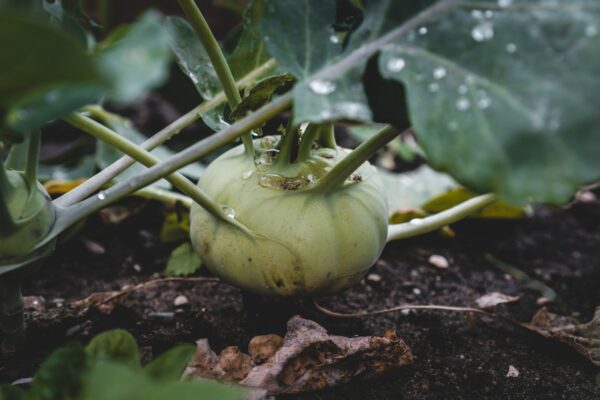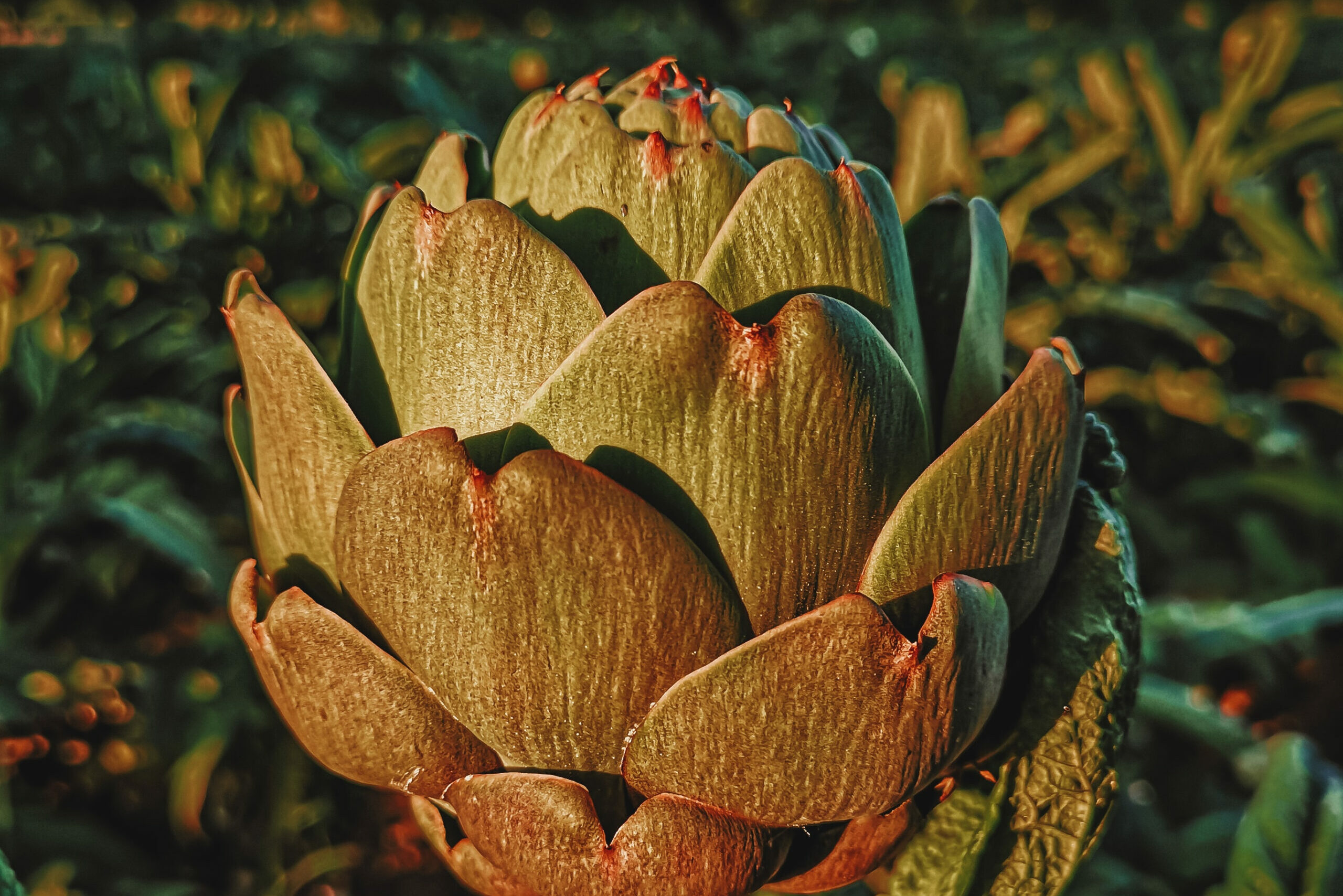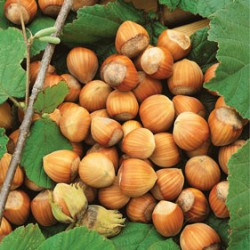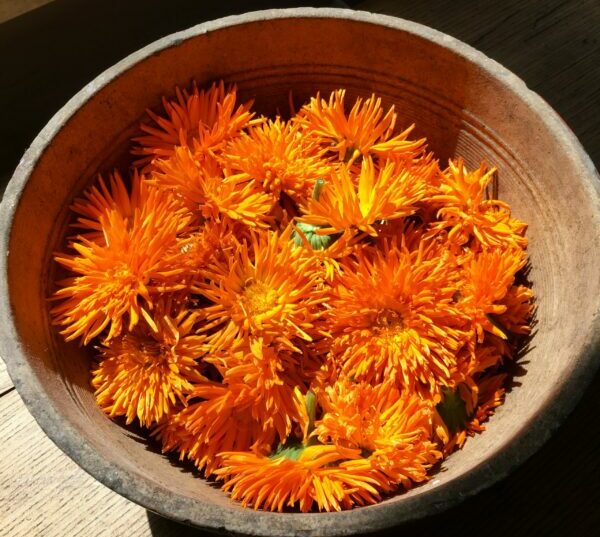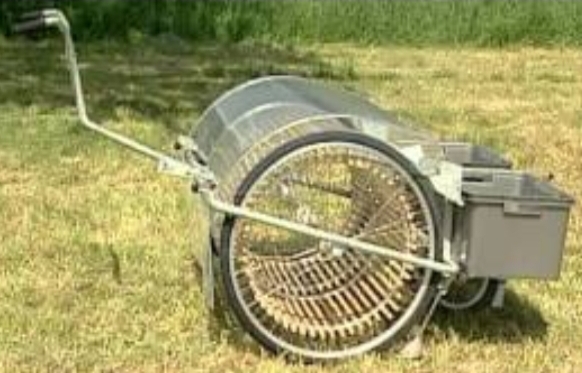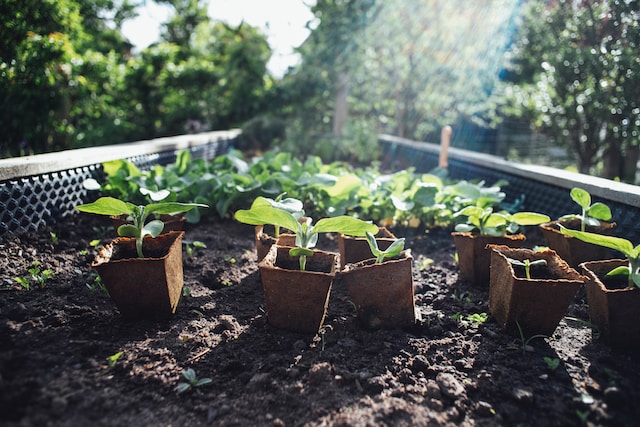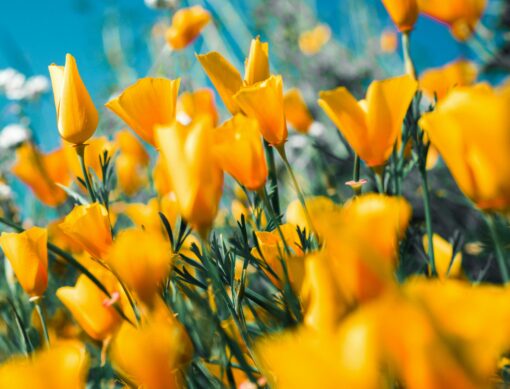How to grow pak choi | Page
Thanks to John Harrison of Allotment & Gardens Pak Choi is a quick, easy crop to grow . It is also called Chinese Cabbage (or Chinese Leaves) and is part of the wider brassica family, but looks more like some of the lettuces. The crisp leaves are slightly mustardy in taste. Recommended Varieties of Pak… Continue reading How to grow pak choi Read more
How to grow onions | Page
Thanks to John Harrison of Allotment & Gardens Onions are the most valuable, yet underrated, vegetable partly due to the bland taste of shop varieties. Home gardeners can choose from a wide variety of onions to suit their taste, from very mild to eye-watering strong. You can also choose particular colours, size, and onions for… Continue reading How to grow onions Read more
How to grow marrows | Page
Thanks to John Harrison of Allotment & Gardens Marrows are cucurbits (the same family as courgettes, squash and cucumbers). There is almost no difference betrween marrows and courgettes – just leave a courgette to grow and you have a marrow. The difference is the varieties are bred for purpose. Sowing and Growing Marrow Marrows are… Continue reading How to grow marrows Read more
How to grow lettuce | Page
Thanks to John Harrison of Allotment & Gardens Lettuce is an easy plant to grow almost all year-round (under cover during colder months). It can be grown in pots and window boxes as well as the open ground, and is generally happy at close spacings. Some varieties are pretty enough to go in the ornamental… Continue reading How to grow lettuce Read more
How to grow leeks | Page
Thanks to John Harrison of Allotment & Gardens Leeks are very hardy member of the onion family and are grown to gigantic sizes for showing, particularly in the North East of England. But smaller plants are tastier and more tender for cooking Leeks are less demanding to grow than onions but they need very careful… Continue reading How to grow leeks Read more
How to grow land cress | Page
Thanks to John Harrison of Allotment & Gardens Land cress is a fast-growing substitute for water cress, with a similar taste, smaller leaf and a long cropping period – over the winter if desired. Recommended Varieties of Land Cress Widely available, called “Land cress” or “American Land cress” Pests and Problems affecting Land Cress There… Continue reading How to grow land cress Read more
How to grow kohlrabi | Page
Thanks to John Harrison of Allotment & Gardens for this guide to growing kohlrabi. Kohlrabi originates in the middle east and came to Europe with Crusaders returning from the Holy Land. When we’ve been in French supermarkets we’ve seen Kohlrabi for sale but never in Britain. In fact, although most gardening books mention it, I’ve… Continue reading How to grow kohlrabi Read more
How to grow kale | Page
Thanks to John Harrison of Allotment & Gardens Kale or Borecole as it was known is one of the easiest leafy brassicas to grow and it stands well in winter as one of the few fresh greens available on the plot. Kale isn’t a popular crop, many found the flavour bitter but more modern strains… Continue reading How to grow kale Read more
How to grow Jerusalem artichoke | Page
Thanks to John Harrison of Allotment & Gardens In 1621 the writer John Goodyer wrote of the Jerusalem Artichoke, “…in my judgement, which way soever they be drest and eaten they stir up and cause a filthie loathsome stinking winde with the bodie, thereby causing the belly to bee much pained and tormented…. more fit… Continue reading How to grow Jerusalem artichoke Read more
How to grow globe artichoke | Page
Thanks to John Harrison of Allotment & Gardens Globe and Jerusalem artichokes share a name only. Jerusalem artichokes are grown for their potato-style roots; globe artichokes for their flower heads. The plants require some effort to grow, prepare and eat. Globe artichokes are a member of the thistle family and grow into extremely large plants… Continue reading How to grow globe artichoke Read more
How to grow garlic | Page
Thanks to John Harrison of Allotment & Gardens Garlic is a member of the onion family – the Alliums. It can be grown successfully in this country. You do need to start with good seed stock, as garlic bought in the supermarket is likely to have been grown in China or Spain, where the climate… Continue reading How to grow garlic Read more
How to grow French beans | Page
Thanks to John Harrison of Allotment & Gardens There are dwarf and climbing varieties of French beans. You can grow them either to eat fresh, or to be dried and stored (often called haricot varieties). They are all members of the legume family. Climbing French beans are grown in the same way as runner beans,… Continue reading How to grow French beans Read more
How to grow fennel | Page
Thanks to John Harrison of Allotment & Gardens Fennel, Common Fennel & Florence Fennel Fennel has two main types – common fennel, and florence fennel – which are not to be confused. Florence fennel is grown for its swollen bulb and eaten as a vegetable, whereas common (or sweet) fennel is a tall (up to… Continue reading How to grow fennel Read more
How to grow cucumbers | Page
Thanks to John Harrison of Allotment & Gardens Cucumbers are in the same family as marrows and squash, the cucurbits – cucurbits, members of the Cucurbitaceae Generally the result of feeding cucumbers with a tomato feed are acceptable but much better results can result from feeding with a more appropriate fertiliser. They crop heavily and… Continue reading How to grow cucumbers Read more
How to grow courgettes / zucchinis | Page
Thanks to John Harrison of Allotment & Gardens Courgettes are one of the cucurbits which also include: marrows, squash and cucumbers and are grown in the same way. They are prolific croppers and are suitable for growing in containers. Courgettes may fail in poor weather if pollinating insects are few but the F1 hybrids will… Continue reading How to grow courgettes / zucchinis Read more
How to grow chilli peppers | Page
Thanks to John Harrison of Allotment & Gardens Chilli peppers are Capsicums. They grow well in a greenhouse or polytunnel, although they can be grown outside in a good summer in the milder South. They will also do well on a sunny window sill. The heat in peppers and chillies is measured in Scoville Heat… Continue reading How to grow chilli peppers Read more
How to grow chicory | Page
Thanks to John Harrison of Allotment & Gardens Chicory is frequently used in an autumn or winter salad. It is an acquired taste; some people find it refreshingly tart, others find it too bitter. There are two main types: forcing (more popular and are said to taste better), and non-forcing (do not require blanching and… Continue reading How to grow chicory Read more
How to grow chard | Page
Thanks to John Harrison of Allotment & Gardens How to Grow Swiss Chard – A Guide to Growing Swiss Chard (aka Chard, Silverbeet, Ruby Chard, Perpetual Spinach, Leaf Beet or Seakale Beet) Swiss Chard So many names for a crop that is so easy to grow. Chard is part of the chenopodiaceae family when it… Continue reading How to grow chard Read more
How to grow celery | Page
Thanks to John Harrison of Allotment & Gardens Celery is a mainstay flavouring vegetable as well as popular snack vegetable. With regular watering and weeding, celery is fairly easy to grow. The modern self-blanching varieties being a lot less trouble than older cultivars. Come autumn, if you still have extra plants, you can dig them… Continue reading How to grow celery Read more
How to grow celeriac | Page
Thanks to John Harrison of Allotment & Gardens Celeriac, a close relative to celery, is making a comeback with it’s very tasty root that is a wonderful addition to soups, stews, and raw in salads. And unlike celery, celeriac roots can be stored up to six months in proper conditions. It is not as fussy… Continue reading How to grow celeriac Read more
How to grow cauliflower | Page
Thanks to John Harrison of Allotment & Gardens Cauliflowers are not the easiest of brassicas to grow but I think they are probably the most satisfying. A beautifully formed cauliflower with tight curds is wonderful to see and producing it is a very satisfying. As well as white varieties you can get yellow and purple… Continue reading How to grow cauliflower Read more
How to grow calabrese | Page
Thanks to John Harrison of Allotment & Gardens There is a lot of confusion over the difference between broccoli and calabrese . The easy way for gardeners to remember is that broccoli is an over wintered crop and calabrese produces its crop the same year it is sown, before winter starts. Calabrese has a milder… Continue reading How to grow calabrese Read more
How to grow carrots | Page
Thanks to John Harrison of Allotment & Gardens Key facts on Growing Carrots: Carrots are quite easy to grow but need deep fertile sandy soil . They come in various shapes and colours ranging from small round varieties, short cylindrical (stump rooted) to the long-rooted types . There are early and maincrop varieties. The earliest… Continue reading How to grow carrots Read more
home | Page
Lowimpact.org was founded in 2001, with a mission to help people live more sustainably. But biodiversity loss and global warming have grown rapidly since then, and are accelerating, with nothing in place to stop them. We’re living through dangerous times. Below is a huge resource bank for gaining the skills for low-impact living, self-provisioning, preparing… Continue reading home Read more
About us | Page
Our focus is changing. We’ve been promoting sustainable living since we were founded in 2001, but we believe that it’s ultimately impossible within corporate capitalism. Trying to live sustainably in a destructive system is like having a great health & safety policy on the Titanic – it seems fine until you see the bigger picture.… Continue reading About us Read more
Contact | Page
If you have a query or comment on any of the topics on our website, please search here for the relevant topic, post your query or comment in the box at the bottom of the page, and we’ll find a specialist to answer it for you. Please don’t contact us if you’re offering marketing, web… Continue reading Contact Read more
Our story | Page
2001: Lowimpact.org was founded as the ‘Low-impact Living Initiative’ (LILI – hence our lily logo), a not-for-profit organisation, by two members of Redfield Community, an intentional community founded in 1978 as a registered housing co-op with 18 acres, which by the 90s had solar hot water, compost loos, straw-bale buildings, organic gardens, orchards, soft fruit,… Continue reading Our story Read more
What low-impact looks like | Page
The ‘impact’ we’re talking about is human impact on nature and on each other, which can be illustrated by comparing our high-impact culture with what we’d like to see instead. Food High-impact: Unhealthy, chemically-grown, processed, overpackaged food. Low-impact: Healthy, local, organic food. Energy High-impact: Environmentally-destructive, fossil-fuel energy. Low-impact: Renewable energy. Shelter High-impact: Identikit… Continue reading What low-impact looks like Read more
Register | Page
[bbp-register] Read more
Search forum | Page
[bbp-search] Read more
Why things need to change | Page
“We’ve been ****ing about with Mother Nature for so long, that soon she’s going to turn round and give us such a slap.” – Fred, King’s Cross Marina There’s a crash coming – a slap from Mother Nature, as Fred puts it. You might hear something, or read an article mentioning the warnings coming from… Continue reading Why things need to change Read more
Wholesale orders | Page
Here are Lowimpact.org publications, with descriptions, contents and retail prices. We can offer a discount for wholesale orders of more than ten books. Please contact Sherry: sherry at lowimpact.org to find the latest prices. Sherry will get the books to you with an invoice. If you’re a new customer, you’ll have to pay up front,… Continue reading Wholesale orders Read more
Our publications | Page
Lowimpact.org provides practical, down-to-earth books stuffed with great information and written by specialists we know and trust. We aim to produce books on as many of our topics as possible. You’ll love them! Our books are sold via our partner, the Centre for Alternative Technology (CAT). Read more
Unsubscribe from our mailing list | Page
To be removed from our mailing list, fill in your email address below, and click the ‘remove’ button. [contact-form-7 id=”27243″ title=”Unsubscribe”] Read more
Directory Categories | Page
These venues run courses on this topic, but may not currently have any scheduled. Please check their websites. They may also be able to run bespoke courses. Read more
Lost Password | Page
[bbp-lost-pass] Read more
Subscribe by PayPal | Page
Sign up to the Low-Impact Network using a PayPal annual subscription. Amount Low-Impact Network – : £10.00 GBP – yearlyLow-Impact Network — : £25.00 GBP – yearlyLow-Impact Network — : £50.00 GBP – yearlyLow-Impact Network —- : £100.00 GBP – yearly Back to the Low-impact Network page. Read more
Blog article & social media policy | Page
Blog articles You’re very welcome to send us an article for the blog. We’ll acknowledge and a link to you at the top. Articles will be accessible from relevant topics, and will remain on the site permanently. We’ll need a contact person to answer any queries that are posted in the comments section. We’re looking… Continue reading Blog article & social media policy Read more
Thank you for your donation | Page
We really appreciate your donation. Thanks for your help in our quest to build a sustainable, non-corporate system. Read more
Thank you for joining the Low-impact Network | Page
Working together, we can build a sustainable, non-corporate system. Your support means we can continue to keep our website free; sourcing courses, books and interviews – building a community dedicated to helping people prepare for what’s coming, by gaining the skills to provide for ourselves and our communities, and by building the commons economy. All of our… Continue reading Thank you for joining the Low-impact Network Read more
Our theory of change | Page
(Click image for larger version) Notes Read more
Our online courses | Page
Lowimpact.org have developed a number of online courses in our range of topics. We worked with specialists to provide 2-3 hours of video content for each course, backed up with text, images, charts and diagrams – everything you need to get started and to succeed in the topic of your choice. The courses are now… Continue reading Our online courses Read more
How to edit your profile | Page
Here’s what to do when you have a directory entry. Go to the directory. Search for your business. Click on your profile. Log in to the site (bottom of page). You’re registered as a user. Your username is usually your first and last names, with no space between them. But if you’ve forgotten your username,… Continue reading How to edit your profile Read more
How to grow almonds | Page
Thanks to John Harrison of Allotment & Gardens How to Grow Almonds – A Guide to Growing Almonds Almond trees are In the same family as peaches, nectarines and plums, and the nuts grow as kernels within the fruit in the same way. Almonds can be grown from the nut (or seed) but it is… Continue reading How to grow almonds Read more
How to grow hazelnuts | Page
Thanks to John Harrison of Allotment & Gardens. How to Grow Hazelnuts – A Guide to Growing Hazelnuts Hazelnuts are easy to grow. They are often used as hedging and grown for their wood, as well as their delicious nuts. They are naturally vigorous, large multi-stemmed bushes, often coppiced for their wood. Bees love the… Continue reading How to grow hazelnuts Read more
How to grow sweet chestnuts | Page
Thanks to John Harrison of Allotment & Gardens. How to Grow Sweet Chestnuts – A Guide to Growing Sweet Chestnuts Sweet chestnuts can be grown from seed, but the resulting tree could take as long as 20 years before producing fruit! Much better to buy a grafted bare-rooted tree from a reliable supplier, which should… Continue reading How to grow sweet chestnuts Read more
How to grow walnuts | Page
Thanks to John Harrison of Allotment & Gardens. How to Grow Walnuts – A Guide to Growing Walnuts Walnuts will begin to produce fruit after about four years. To obtain a good crop, most varieties will need a pollinator of a different variety as the male and female flowers grow together on a single tree… Continue reading How to grow walnuts Read more
How to grow apples | Page
Thanks to John Harrison of Allotment & Gardens Apple trees are reasonably easy to cultivate. Choose a variety to suit your location, space, and needs. They can be grown along a fence, as a cordon or espalier/fan; or as a stepover, trained along a wire about 45–60cm (18–24 inches) off the ground. Some varieties are… Continue reading How to grow apples Read more
How to grow apricots | Page
Thanks to John Harrison of Allotment & Gardens. Apricots can be more difficult to grow than other tree fruit due to their sensitivity to frost. The further north, the more difficult. Not all varieties thrive in all areas, so advice should be sought when you choose your tree as the most suitable for your location.… Continue reading How to grow apricots Read more
How to grow cherries | Page
Thanks to John Harrison of Allotment & Gardens. Cherries There are two edible types – the sweet eating cherry and the acid cooking cherry. The decorative cherry trees you see blossoming in public parks in the spring are infertile and don’t produce fruit. Growing Cherries Plant bare rooted stock in November–December. Container grown trees can… Continue reading How to grow cherries Read more
How to grow citrus fruit | Page
Thanks to John Harrison of Allotment & Gardens. Growing Citrus Fruits – Secrets of Success This article on growing citrus fruit is by Dick Handscombe who retired to Spain where he enjoys living a self-sufficient life and writing on gardening in Spain and other subjects. Here he considers the secrets of successful citrus fruit growing.… Continue reading How to grow citrus fruit Read more
How to grow damsons | Page
Thanks to John Harrison of Allotment & Gardens. How to Grow Damsons – A Guide to Growing Damsons Damsons are actually a form of plum but with a generally tart flavour and being used more for cooking, jams, wine etc rather than eaten fresh. Damsons Damsons are hardier than most plums and will often succeed… Continue reading How to grow damsons Read more
How to grow greengages | Page
Thanks to John Harrison of Allotment & Gardens. Greengages are a small, round, yellow-green and deliciously sweet type of plum.They were introduced into Britain from France by Sir William Gage in the 1720s. Greengages are also known as Reine Claudes from the name of the original French cultivar. Greengages Being a plum, cultivation of gages… Continue reading How to grow greengages Read more
How to grow figs | Page
Thanks to John Harrison of Allotment & Gardens. Figs Hardy varieties of figs will easily grow throughout the UK right up to the north of Scotland. An ideal plant for container growing, their fruit is produced by fruit buds that appear the previous fall which do not flower or need pollination. Root growth restriction encourages… Continue reading How to grow figs Read more
How to grow cabbage | Page
Thanks to John Harrison of Allotment & Gardens The oldest cultivated vegetable was the pea but cabbage was not far behind. Not only is cabbage highly nutritious but it can be stored for a number of months without any processing and by fermenting into sauerkraut becomes a foodstuff that will store for a year. Whilst… Continue reading How to grow cabbage Read more
How to grow Brussels sprouts | Page
Thanks to John Harrison of Allotment & Gardens Brussels Sprouts were a popular vegetable in Belgium, hence the name. They are delicious if grown and cooked correctly – see Brussels sprouts recipes and are an excellent source of vitamins C and D and dietary fibre. They also contain glucosinolates – compounds which may help to… Continue reading How to grow Brussels sprouts Read more
How to grow brassicas | Page
Thanks to John Harrison of Allotment & Gardens This article is about growing the leaf brassicas rather than the Swedes and Turnips. Sadly they can be tricky to succeed with but hopefully by following this guide you’ll get great results. The cabbage tribe, brassicas, are one of the most important food plant groups grown in… Continue reading How to grow brassicas Read more
How to grow broccoli | Page
Thanks to John Harrison of Allotment & Gardens There is a lot of confusion over the difference between broccoli and calabrese . The easy way for gardeners to remember is that broccoli is an over wintered crop and calabrese produces its crop the same year it is sown, before winter starts. Both are brassicas and… Continue reading How to grow broccoli Read more
How to grow broad / fava beans | Page
Thanks to John Harrison of Allotment & Gardens Key facts on Growing Broad (Fava) Beans: For Crop Rotation plant them with peas and beans (legumes) Easy to grow. Sow direct in their final growing position as described below or start them in 3″ pots. Plant these out when the seedlings begin to show. Broad Beans… Continue reading How to grow broad / fava beans Read more
How to grow beetroot | Page
Thanks to John Harrison of Allotment & Gardens Key facts on Growing Beetroot: Beetroot are easy to grow. The globe-shaped beetroot are the most common but there are also cylindrical varieties which are often grown for show and have the benefit of evenly sized slices. Most beetroot are suitable for close spacing and container growing.… Continue reading How to grow beetroot Read more
How to grow aubergines | Page
Thanks to John Harrison of Allotment & Gardens Key facts on Growing Aubergine: Plant Family for Crop Rotation: Solanaceae Aubergine are really a greenhouse crop but are suitable for small spaces and container growing if you can provide cover, such as a plastic tent cloche. The best known varieties are the large black ones, but… Continue reading How to grow aubergines Read more
How to grow asparagus | Page
Thanks to John Harrison of Allotment & Gardens Key facts on Growing Asparagus: Plant Family for Crop Rotation: Asparagaceae Growing asparagus is a long term project – it takes at least two years to come into production but will then continue for up to 20 years, repaying the initial investment many times over. Asparagus is… Continue reading How to grow asparagus Read more
How to grow whitecurrants | Page
Thanks to John Harrison of Allotment & Gardens Whitecurrants are a sport form from the redcurrant. They have a grape like flavour and are perfect served fresh. Varieties of Whitecurrants White Versailles is a favourite variety. It crops well and consistently in Early July. Its fruits are pale yellow and sweet. Pests and Problems with… Continue reading How to grow whitecurrants Read more
How to grow tayberries | Page
Thanks to John Harrison of Allotment & Gardens Tayberry (Rubus fruticosus x ideaus) is a cross between a blackberry and a red raspberry, and is named after the River Tay in Scotland. It was patented in 1979. If there is only space to grow one hybrid berry, a tayberry is an excellent choice. It is… Continue reading How to grow tayberries Read more
How to grow strawberries | Page
Thanks to John Harrison of Allotment & Gardens Strawberries are the quintessential summer fruit, easy to grow and delicious to eat. They’ll easily grow in pots, containers and the specially designed strawberry barrels. Strawberries are short-lived. After three years, dig out the old plants and replace with new, planting in a different position or into… Continue reading How to grow strawberries Read more
How to grow rhubarb | Page
Thanks to John Harrison of Allotment & Gardens Rhubarb is one of the easiest, almost indestructable perennial plants to grow, but is also a fairly large plant with a deep root system so is not suitable for close spacing or containers. However, it can be grown in open based containers. Rhubarb leaves contain oxalic acid,… Continue reading How to grow rhubarb Read more
How to grow redcurrants | Page
Thanks to John Harrison of Allotment & Gardens Redcurrants are in many ways grown in the same way as gooseberries rather than like blackcurrants. They can be grown as bush , espalier or vertical cordons . Varieties of Redcurrant Jonkheer Van Tets is a popular variety. It produces a heavy crop early of good flavour… Continue reading How to grow redcurrants Read more
How to grow raspberries | Page
Thanks to John Harrison of Allotment & Gardens Raspberries (Rubus ideaus) are a self fertile cane fruit which prefer a slightly acidic soil, which drains well. They are prone to root rot in waterlogged soil, and dislike really chalky soils. They do well in a sunny spot, but will tolerate partial shade. There are two… Continue reading How to grow raspberries Read more
How to grow mulberries | Page
Thanks to John Harrison of Allotment & Gardens The mulberry is a beautiful, ornamental tree. The fruits have a wonderful flavour and lots of sweet juice and the limbs become crooked and gnarled as they age, making an attractive architectural feature. They can grow as high as 8–12 M (25–35 feet) but can be pruned… Continue reading How to grow mulberries Read more
How to grow loganberries | Page
Thanks to John Harrison of Allotment & Gardens Loganberries are often said to be a cross between a raspberry and a blackberry but the truth is that they’re probably a blackberry sport (mutation). They were originally grown in 1881 by Judge James H Logan of California who sowed some American blackberry seed and these popped… Continue reading How to grow loganberries Read more
How to grow lingonberries | Page
Thanks to John Harrison of Allotment & Gardens Lingonberries will grow successfully in the UK. They’re native to Scandinavia where they’re almost a weed in some areas. Extremely hardy, as you’d expect. They’re similar in taste to cranberries but, I think, with more depth of flavour. I first came across them served as a jam… Continue reading How to grow lingonberries Read more
How to grow jostaberries | Page
Thanks to John Harrison of Allotment & Gardens Jostaberry is a cross between a blackcurrant and gooseberries. It forms a very vigorous spineless shrub, growing up to 1.8-2m tall and a similar size across, and is self fertile so only one need be grown. The fruits are larger than a blackcurrant and are dark reddish… Continue reading How to grow jostaberries Read more
How to grow grapes | Page
Thanks to John Harrison of Allotment & Gardens Grapes can be successfully grown outdoors in the south of the countryand in sheltered spots, although to be reliable dessert grapes do need the shelter of a greenhouse. Farther north, both types probably need protection but a lot depends on the variety grown and the micro-climate. Grapes… Continue reading How to grow grapes Read more
How to grow gooseberries | Page
Thanks to John Harrison of Allotment & Gardens Gooseberries are often thought to be easy to grow but they really need care to produce plants that will bear a good crop of easily pickable berries each year. They are not a popular as they used to be in the 19th century when gooseberry clubs and… Continue reading How to grow gooseberries Read more
How to grow goji berries | Page
Thanks to John Harrison of Allotment & Gardens Goji berries (Lycium Barbarum), aka Chinese Wolfberry or Duke of Argyll’s tea-tree, are fully hardy deciduous shrubs originally from the Himalayas and easy to grow. They rose to fame as a ‘super food’ loaded with anti-oxidants. Time will reveal how valid this claim is, and how much… Continue reading How to grow goji berries Read more
How to grow cranberries | Page
Thanks to John Harrison of Allotment & Gardens Cranberries are a tasty and easy to grow tart fruit that add dimension to recipes as well as makes delicious juice. Dried, they are a nice healthy snack or delicious addition to salads. Cranberries are high in Vitamin C and antioxidants earning them a place in the… Continue reading How to grow cranberries Read more
How to grow blueberries & bilberries | Page
Thanks to John Harrison of Allotment & Gardens Blueberries and bilberries are both acid-loving, moorland plants that seem identical, but in fact differ. Bilberries are a small shrub that grows in heaths and underbrush but is actually a cultivated hybrid of three native American species. Bilberry fruits grow as single, small, darker fruit than blueberries… Continue reading How to grow blueberries & bilberries Read more
How to grow blackcurrants | Page
Thanks to John Harrison of Allotment & Gardens Blackcurrant bushes are not difficult to grow and can produce 4.5-7 kg (10-15 lb) of fruit per year. So one plant may be all you need. Some of the smaller varieties can be grown in large containers. Correct planting and pruning is important as most of the… Continue reading How to grow blackcurrants Read more
How to grow blackberries | Page
Thanks to John Harrison of Allotment & Gardens The humble blackberry has much to offer: it is high in vitamin C, crops heavily, is easy care, can be eaten fresh or cooked, and blends very well with apples for jams, crumbles and other side dishes. Blackberries, as well as most blackberry hybrids, can be vigorous… Continue reading How to grow blackberries Read more
How to grow plums | Page
Thanks to John Harrison of Allotment & Gardens. Plums are one of several fruit trees that used to be practical only if you had a large garden or area of orchard. These days the trees are grafted onto dwarf rootstock making it possible to buy small trees, dwarf pyramids and even minarette plums for container… Continue reading How to grow plums Read more
How to grow pears | Page
Thanks to John Harrison of Allotment & Gardens. Pears are similar to apples from a growing point of view, except that they flower earlier which does mean they are more at risk from late frosts. There are two basic types of pear – those suitable as dessert pears and those for cooking. Some varieties, such… Continue reading How to grow pears Read more
How to grow peaches | Page
Thanks to John Harrison of Allotment & Gardens. Peaches and Nectarines Peaches and nectarines depend on a sheltered, south facing position free from frost pockets, otherwise, the early spring blossom might be damaged. A popular method is to train them against a south-facing wall which holds the day’s heat through the night, and if cold… Continue reading How to grow peaches Read more
How to grow olives | Page
Thanks to John Harrison of Allotment & Gardens. Olives are a mediterranean evergreen tree. Although they can reach a height of 9–12m (28–40 feet), they are extremely slow growing and, with pruning, are suitable for a small garden or growing in a large container. They may produce fruit after mild summers in mild regions of… Continue reading How to grow olives Read more
How to grow kiwi fruit | Page
Thanks to John Harrison of Allotment & Gardens. Kiwifruit can be grown successfully in the UK so long as you have plenty of space and a sunny spot. Despite the ‘kiwi’ name suggesting they come from New Zealand, they are actually from southern China originally. Nowadays most kiwifruit sold in the UK comes from Italy.… Continue reading How to grow kiwi fruit Read more
How to grow melons | Page
Thanks to John Harrison of Allotment & Gardens Melon, including watermelons, can be successfully grown in the UK. They are a tender annual, suited to growing in containers or growbags. Melon are a vigorous climber – leave them to sprawl on the ground or provide a strong frame as a support and net the fruits… Continue reading How to grow melons Read more
Calendula moisturising bars | Blog article
The best thing about growing Calendula for me is watching all the insects that come to enjoy those bright happy flowers that sway and sing with the wind. Calendula is a must have for any cottage garden/allotment/informal space and is an excellent open flower which is perfect for those insects and bees. Calendula officinalis is… Continue reading Calendula moisturising bars Read more
Do you know your carbon footprint? (And does it matter?) | Blog article
How useful is it to know our carbon footprint? Read more
Stroud Commons 4: new website | Blog article
Stroud Commons now has a website – stroudcommons.org. Please tell anyone you know in Stroud about us. We’re looking for people to get involved. Read more
Why is the co-operative movement so successful in Emilia Romagna? With Matt Hancock (no, not that one) | Blog article
Today I’m talking with Matt Hancock, who’s been heavily involved with the co-operative movement in Emilia Romagna – the region of Italy around Bologna. There’s a huge, very successful co-op sector in ER. I want to try to find out in this interview is why – what’s special about ER, and can it be emulated elsewhere? Read more
Human scale technology at the Green Fair | Blog article
This is a call out to designers, inventors, makers and creators of alternatively powered human scale appropriate technology. Read more
What is WikiHouse? | Blog article
Have you heard of the WikiHouse? Find out about this technology and open source construction set. Read more
Stroud Commons part 3: ‘Money Talks’ public event with Brett Scott, May 19 | Blog article
Stroud ‘commoners club’ is hosting a public event at the Trinity Rooms in Stroud on Friday, May 19 at 7pm. If you live in Stroud, please do come along, and if you know anyone in Stroud, please let them know. Read more
Are metal raised beds safe for vegetables? | Blog article
With the growing season, we look at whether or not a metal raised bed is safe for vegetable growing? Read more
Matthew Slater’s review of recent money news | Blog article
Matthew Slater, co-author of the Credit Commons white paper, produces a biannual (usually!) roundup of money news he finds interesting. Here’s the latest. Read more
Housing co-op seeking founder members | Blog article
Lusan Housing Co-op is a fully mutual co-operative, registered with the FCA and applying to join Radical Routes. There’s six of us at the moment and we’re actively seeking more founder members. We are going to start raising loanstock in April and hope to buy land and buildings somewhere in Dumfries and Galloway later this… Continue reading Housing co-op seeking founder members Read more
20 year research project reveals devastating loss of British and Irish flora | Blog article
What has causes a devestating decline in British and Irish flora? Read more
